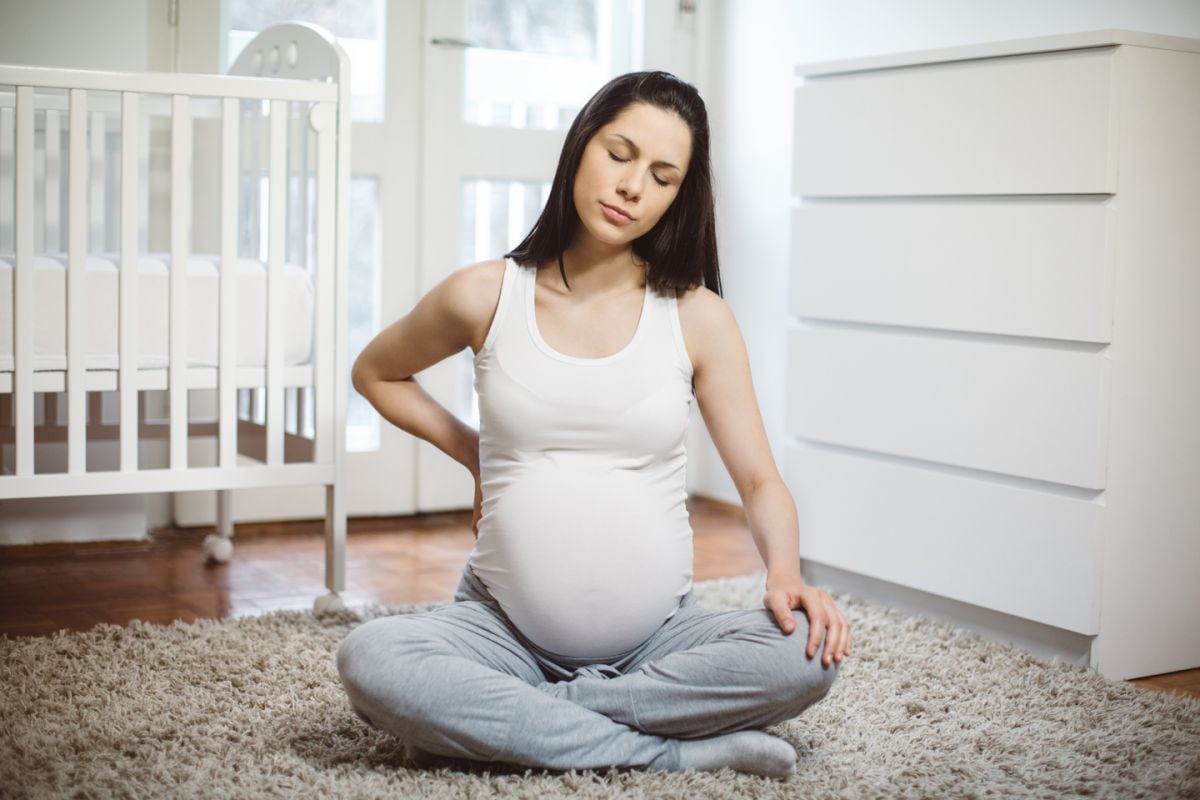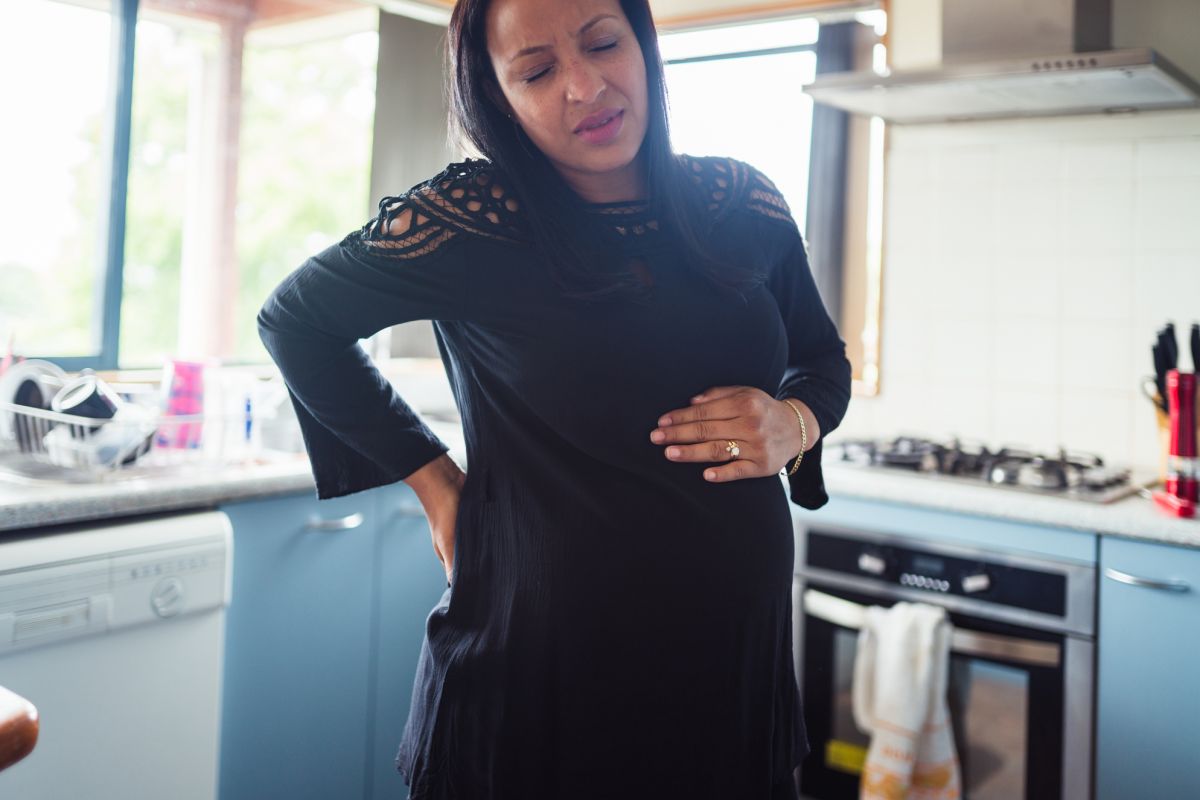
Pregnancy and low back pain
Studies have shown that 50% of women develop low back pain or pelvic girdle pain during pregnancy. Pelvic girdle pain is lower than your typical back pain and can occur in the back, around the sacroiliac (SI joints), or can show up in the front, around the pubic symphysis.
Both joints widen naturally due to relaxin and estrogen in the body, so there is more room for the delivery of a baby. The widening of these joints was previously blamed for the pain that women experience during pregnancy. However, more and more research is now disproving that the widening of joints is the cause of the pain as new findings come to the surface.
Low back pain during pregnancy: an indicator of stress levels

Women with low back pain/pelvic girdle pain during pregnancy have a couple of things in common.
- A hypertonic (TIGHT) pelvic floor.
- High cortisol levels (STRESS) hormones.
Stress, as you may know, can cause the pelvic floor muscles to tighten up. When a muscle is really tight, it can’t function optimally. Not only is it unable to contract properly to stop pee, it’s also unable to do the opposite and relax.
During delivery, the pelvic floor needs to be able to relax as the uterus contracts so that the baby can be delivered. Without a properly relaxed pelvic floor, women are at a higher risk of tearing in the perineal area.
Low back pain during pregnancy should not be ignored. It is more than just pain: it can also be an indicator of your stress levels that may impact your delivery process.
What to do if you start experiencing low back pain during pregnancy

Go see a healthcare professional or pelvic health therapist. An internal assessment should be performed in order to better understand tension around the pelvic floor area.
Your pelvic health therapist will walk you through the assessment process and then explain to you their findings. They may assign you specific exercises, educate you on delivery positions that will work best for you or give you tips to get through labour and aftercare for your post-partum recovery.
In most cases, one thing you can add to your daily routine is light exercises. The easiest exercise to add to your routine is simply to walk as much as you can tolerate. Getting as much blood flow to the legs and pelvic floor as possible can make a lot of the congestion go away and help with the tension and pain.
Yoga is another great exercise you can start doing. Find a class in your area or do some at home with a guided video. Lastly, take some time to do some deep breathing, as it is important for your core and it can help decrease those stress hormones.
There are many things you can do to make your pregnancy and delivery more comfortable. If you’d like to consult a pelvic health therapist, check our Locations page to find a clinic near you or book online to schedule an appointment with a Lifemark clinician.